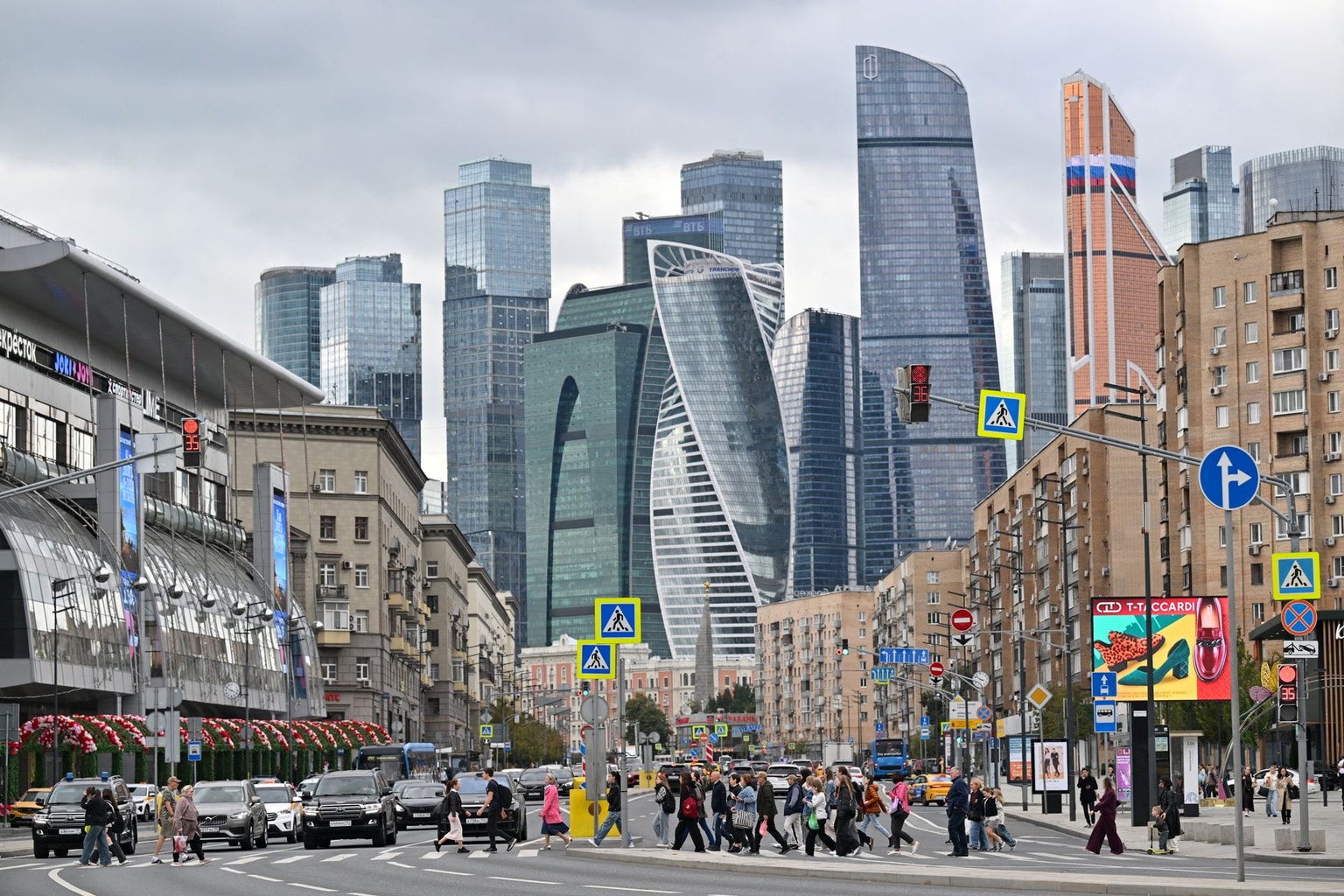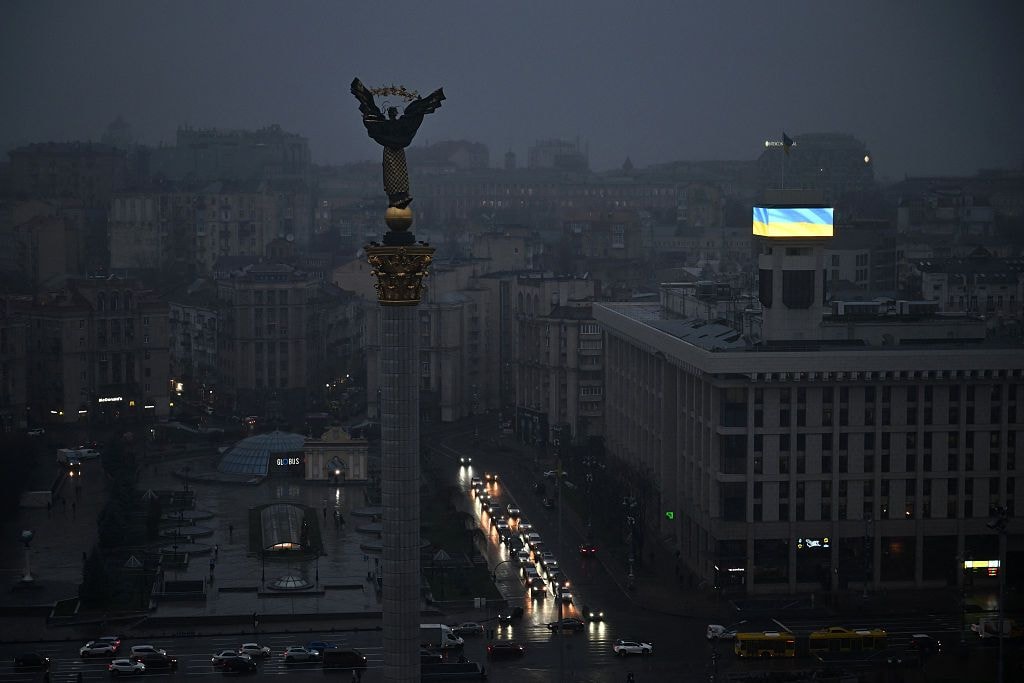
Russia's air defenses are wide open — there's just one problem for Ukraine
Red Square as it hosts a display of WWII Red Army military hardware as part of the 'City of Living Stories' open air museum in Moscow, Russia, 7 Nov, 2025 (Sefa Karacan/Anadolu via Getty Images)
Ukrainian drones — and the occasional missile — have been causing havoc across Russia for months.
According to Ukraine's Security Service (SBU), nearly 160 successful strikes have been conducted in 2025 against oil extraction and refining facilities, leading to fuel shortages and a 37% drop in refining capacity.
"These are legitimate military targets. Oil extraction and refining make up around 90% of Russia’s defense budget. These are the dirty petro-rubles funding the war against us," SBU Chief Vasyl Maliuk said on Oct. 31.
The Kremlin is struggling to respond. On Nov. 4, Russian President Vladimir Putin signed a law that would allow reservists to be sent to defend critical infrastructure such as oil refineries from drone attacks.
In practice, this likely means an increase in mobile air defense units consisting of troops manning truck-mounted machine guns — something Russia has already been recently ridiculed about.
A photo showing two Russian soldiers standing beside a pickup truck with an anti-aircraft gun near the Kremlin went viral on Oct. 26, as Moscow came under a mass drone attack.
The image, published by pro-Kremlin Telegram channels, quickly became a symbol of how far Russia’s war has turned inward.
"From three days to Kyiv to two dudes defending Moscow. Em-bar-ra-ssing," Meaghan Mobbs, political commentator and daughter of U.S. Special Envoy Keith Kellogg, wrote on X on Oct. 27.
Wait.
— Meaghan Mobbs (@mobbs_mentality) October 27, 2025
I was reliably told Russia is a superpower.
3 days to Kyiv to 2 dudes defending Moscow.
Em-bar-ra-ssing. https://t.co/FV95Du0Ua8
The state of Russia’s air defenses
Russia is often ranked as the world’s second most powerful military after the United States. But experts say that corruption, years of war, redeployments, and constant Ukrainian strikes have weakened not only its frontline forces but also stretched its air defense network.
"Russia has lost many air defence systems over the past two years, so it is plausible that there are many holes in their coverage that make successful attacks possible," Sascha Bruchmann, a military analyst at the London-based International Institute for Strategic Studies (IISS), told the Kyiv Independent.
George Barros, Russia Team & Geospatial Intelligence (GEOINT) Team Lead at the Institute for the Study of War (ISW), said Russia now concentrates most of its air defenses around the Ukrainian front and a few strategic regions.
"Once you get past that initial shell around the theater in Ukraine, the rest of Russia has holes and vulnerabilities," he told the Kyiv Independent.
Ukraine has repeatedly exploited those gaps on multiple occasions now. In one of the more impressive strikes, in April a drone packed with explosives hit a Shahed drone factory in Tatarstan, more than 1,000 kilometers (621 miles) from Ukraine's border.
Ukrainian drone strike in Yelabuga, Tatarstan, where Russia built a facility to make Shahed drones. It is the longest range strike so far, some 700 miles away. pic.twitter.com/ruAJDTUOld
— Yaroslav Trofimov (@yarotrof) April 2, 2024
Barros said the strike showed that Russia’s long-range radar coverage is inconsistent and its ability to intercept slow-moving targets remains limited.
The situation around Moscow appears different. The capital and its surrounding region remain heavily protected, with multiple layers of radar and missile systems.
"There’s a high concentration of Russian air defenses around Moscow. It’s difficult for our drones to reach the city center," said Oleksiy, a deputy commander responsible for coordinating four air defense units guarding the north side of Kyiv.
Still, he said, the image of two soldiers standing with a pickup-mounted gun in front of the Kremlin "makes little tactical sense."
"The Kremlin, the mausoleum, and this mobile anti-aircraft crew — it’s hardly the place where you’d shoot down drones. You don’t fire over your own cultural landmarks," Oleksii said.
He believes the image was aimed for domestic audiences.
"It’s meant to reassure Russians that their sacred symbols — the Kremlin, Red Square — are protected. I think it’s more about shaping a narrative than about real defense," he said.
There's also the issue of how useful these units will be. Oleksii said they were "cheap" and "effective" for Ukraine when Russia first started launching Shahed drones in 2022, but improvements in tactics and technology have rendered them ineffective.
"Now drones climb above 2,000 meters, and these groups are no longer as effective," he said.
The problem
Despite all the gaps and deficiencies in Russia's air defenses, there is one glaring problem for Ukraine — it lacks the weapons to exploit them to the fullest.
While Kyiv is having success with its long-range drones with their warheads in the tens of kilograms, they'll never match the punch of a cruise missile.
Ukraine has the domestically-produced Neptune missile but its sparing use suggests it has not yet produced them in vast numbers. An upgraded version dubbed "Long Neptune" was only announced to have passed testing in March.
Then of course there is Ukraine's much-vaunted, domestically produced Flamingo missile — an absolute beast with a huge 1,150-kg warhead and a claimed range of 3,000 kilometers (1,864 miles).

But despite President Volodymyr Zelensky in recent months confirming their use in combat last month, and saying they will enter into serial production, they do not yet appear to be present in Ukraine's arsenal in significant numbers.
For Ukraine to fully exploit Russia's air defenses in the short-term, it needs a significant number of missiles from its Western allies.
The U.K. recently replenished Ukraine's arsenal with an undisclosed number of Storm Shadow missiles, but two countries in particular could give Kyiv a massive boost but have so far refrained from doing so.
Last month saw huge speculation that the U.S. would send Ukraine Tomahawk missiles which, although a decades-old weapon, would be ideally suited for exploiting gaps in Russia's air defenses.
"Tomahawks fly slowly, and they're not exactly stealthy," Tom Karako, a senior fellow with the Center for Strategic & International Studies, told the Kyiv Independent.
"But their utility against air defenses is that they can fly low and slow, and they can fly circuitous routes to go around air defenses and hug the terrain."
At present, U.S. President Donald Trump has said they won't be heading for Ukraine for now, but Kyiv is still pushing.
"We are in constant talks with the U.S. government on different capabilities, but it’s too sensitive a topic to go into details at this point," Ukraine’s Ambassador to the U.S. Olha Stefanishyna, told the Kyiv Independent.
Then there is also Germany which, even when U.S.-made ATACMS and U.K.-French Storm Shadows were greenlit, refused to send its own Taurus cruise missile.
The Taurus missile is capable of striking targets at a distance of 500 kilometers (300 miles) — a range greater than other long-range weapons Ukraine has received from allies.
"Delivering Taurus at this point is less for the Ukrainians and more for the Germans because Taurus has become this ultimate symbol of German fear and escalation angst," Fabian Hoffmann, a doctoral research fellow at the University of Oslo specializing in missile technology, told the Kyiv Independent earlier this year.
"And that's why delivering Taurus is so important — you right that wrong," he added.
Additional reporting by Abbey Fenbert.
Hi, Tania Myronyshena here — thanks for reading my latest piece.
Drones hitting deep inside Russia might have sounded like science fiction not long ago. But now it is part of reality. It was a fascinating story to work on.
If you’d like to see more reporting like this, please consider supporting the Kyiv Independent.










